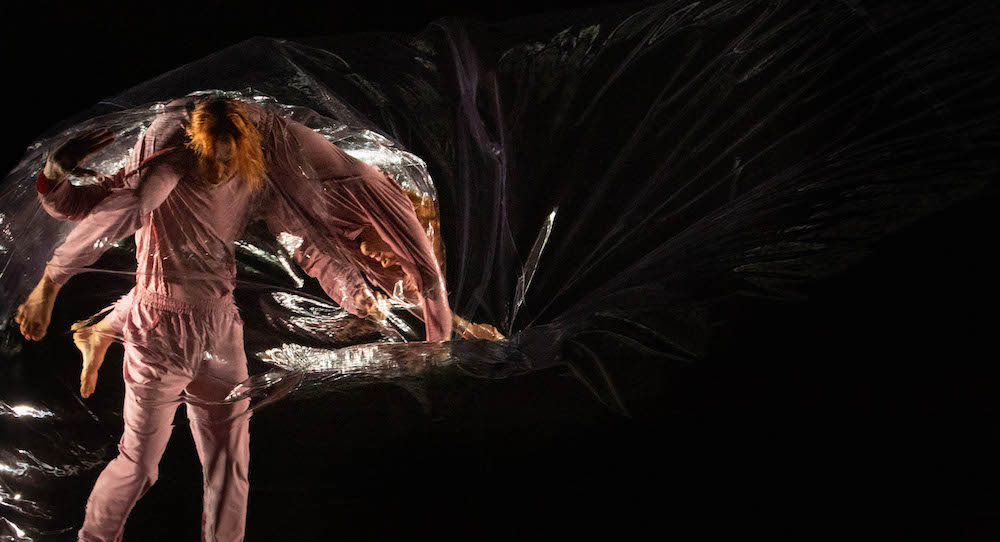Malthouse Theatre, Melbourne.
26 May 2021.
If ever we are tempted to think of art as existing in a pristine space – neatly framed and packaged – the opening of Dancenorth’s RED at Melbourne’s freshly minted RISING Festival served to remind us that art always lives in context. Indeed, it is hard to imagine a more loaded moment for a first night; the work rendered eerily apt and portentous by lunar eclipses and looming lockdowns.
Two days earlier, RED’s co-creator Kyle Page had told me, “The primary idea for us really is the preciousness of life, that life truly thrives as a response to other forms of life.” The work’s choreographic and dramatic meditation on the dynamic, networked nature of the biosphere, and on the core symbiosis of planetary processes, was a perfect fit for a room full of people wearing masks. Outside, somewhere in the suburbs, invisible RNA strands were busily reproducing, while in the stalls, sanitised hands wrung with a mix of trepidation and resignation, as if in expectation that they would emerge, post-show, into an altered world.
Meanwhile, a shadow was making its way across the face of a full moon. How the ancients would have shuddered.
To regard the work outside this remarkable context would have been a denial, a refusal to bear witness. As if news of growing clusters were not enough to focus our attention, the stage writhed and stretched, an elastic harbinger. That the dance took place in an inflated plastic bubble simply underscored the multi layers of the moment.
Dancenorth’s twin creative leads, Page and his partner Amber Haines, have constructed a choreography inspired by the moving mosaic of biological interaction. Dancers Georgia Rudd and James O’Hara relate both one-to-one and part-to-whole, connecting, separating, smashing back together. Around them, a transparent womb, where the balance of forces is such that nurture can turn rapidly to toxicity.
Transcribed as movement, it plays out as sinuous, angular, articulated and occasionally violent. Eventually, the set dances with them, its pleasing symmetry reduced to molten formlessness, as though shrink wrapping the dancers. And us. Extinction as preservation.
Weaved throughout, Alisdair Macindoe’s glowering sound design felt like a storm front, dark clouds we tried to ignore as we basked in the final rays of sunshine. Although abstract, its feel and volume reminded us of radiation and, inevitably, pathogens. (Beyond the bubble there is another bubble, and so on.)
If Page and Haines were simply trying to warn us or proselytise our downfall, darkened moons and the prospect of imminent ‘iso’ served to turn the sound of thunder up a notch. Yet, even on such a night, there was more than Armageddon in the air. The branching network we live in is a thing of beautiful power. Think, ‘wood wide web’ and the butterfly effects of Poincare and Lorenz. Recall the child in its mother’s belly. See the art in its context. RED maybe considered as much homage as canary.
However, it was hard not to regard David Cross’ inflatable set as the star of the show. The bubble metaphor was writ large. Its bursting, its deflation, its final act of encasement…perhaps it spoke more of us than to us. The human bubble, extracted from nature, so easily pinpricked by a virus. The arts festival bubble, squished into a black box, applauding ourselves before scuttling back to our 5G boltholes to contemplate yet another dose of digital binging. Together, apart, and all the rest of it.
And in the chill, airless ocean of space, one floating rock cast a shadow on another. How many of us looked up from the dusty Malthouse courtyard that night and thought, yep, that’s what the show was about?
By Paul Ransom of Dance Informa.

















